
 1900s
1900s 1920s
1920s 1930-1940s
1930-1940s 1950-1960s
1950-1960s 1970s-1980s
1970s-1980s 1990s
1990s
(HER)Story of Women In The Vinyl Industry
“Our work should equip the next generation of Women to outdo us in every field, this is the legacy we will leave behind.” – Progress, by Rupi Kaur
We hope that this list will be a resource to highlight the accomplishments of women who came before us and paved the way to where we are now in the vinyl industry. There are even more women in areas of engineering, producing and music in general, our goal below is to focus on the road to vinyl as we now appreciate and know it.
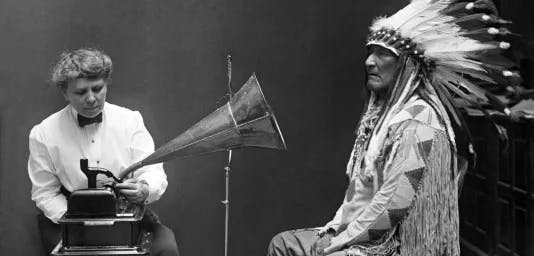
Densmore with Blackfoot chief, Mountain Chief, during a 1916 phonograph recording session for the Bureau of American Ethnology. This image is available from the United States Library of Congress’s Prints and Photographs division
1907: Frances Theresa Densmore was an American anthropologist and ethnographer born in Minnesota. She is known for her studies of Native American music and culture as an ethnomusicologist (someone who examines music as a social process in order to understand not only what music is, but what it means to its practitioners and audiences). Frances began recording music on wax cylinders for the Bureau of American Ethnology (BAE) at the Smithsonian Institution. She studied Native American music for 50 years and many recordings are in the Library of Congress. Densmore began recording music officially for the Smithsonian Institution’s Bureau of American Ethnology in 1907. In her fifty-plus years of studying and preserving Native American music she collected thousands of recordings which are now held in the Library of Congress. While her original recordings often were on wax cylinders, many of them have been reproduced using other media and are included in various other archives. Densmore was frequently published in the journal American Anthropologist, contributing consistently throughout her career.
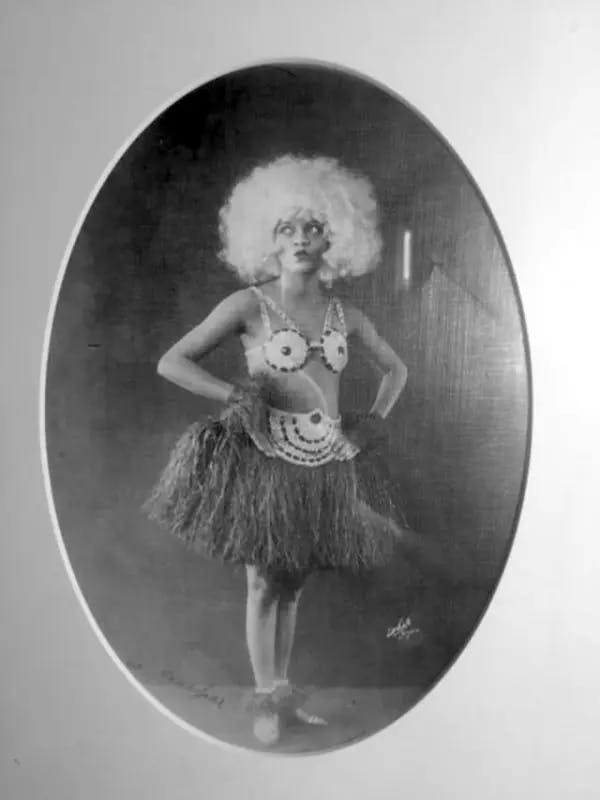
Juanita Stinnette Chappelle in Costume Photo via Roots Vinyl Guide
1921: Juanita Stinnette Chappelle was a singer and vaudeville performer. She was the co-founder of Chappelle and Stinnette Records during the Harlem Renaissance era with her husband Thomas E. Chappelle. Their record label was founded around 1921 and is considered the second record company owned and operated by African Americans. They released six records, five of which they were on.
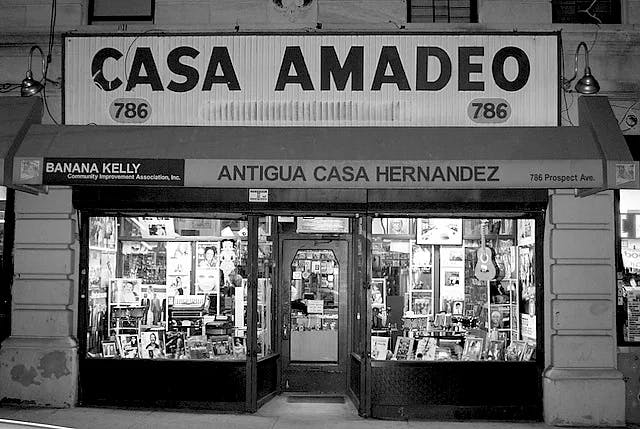
Casa Amadeo (antigua Casa Hernández) at 786 Prospect Avenue in the Bronx, NY. Photo via Centro Hunger CUNY
1927: Afro-Puerto Rican music entrepreneur Victoria Hernández opened the first Latin music store in New York City, after working as a seamstress. It was one of only sixteen businesses at the time owned by a Puerto Rican migrant women. The store was founded as Casa de Música, later renamed to Casa Hernández. The same year she also started the record label Hispano. Unfortunately the label closed because of the Great Depression, but her record store has been operating longer than any other music store in the city and is still operational today, now known as Casa Amadeo, antigua Casa Hernandez. Though Victoria was an accomplished violinist, cellist and pianist, she dedicated herself to the business aspect of the industry; it was a time when being a business owner was more respectable than being a musician, especially for women.
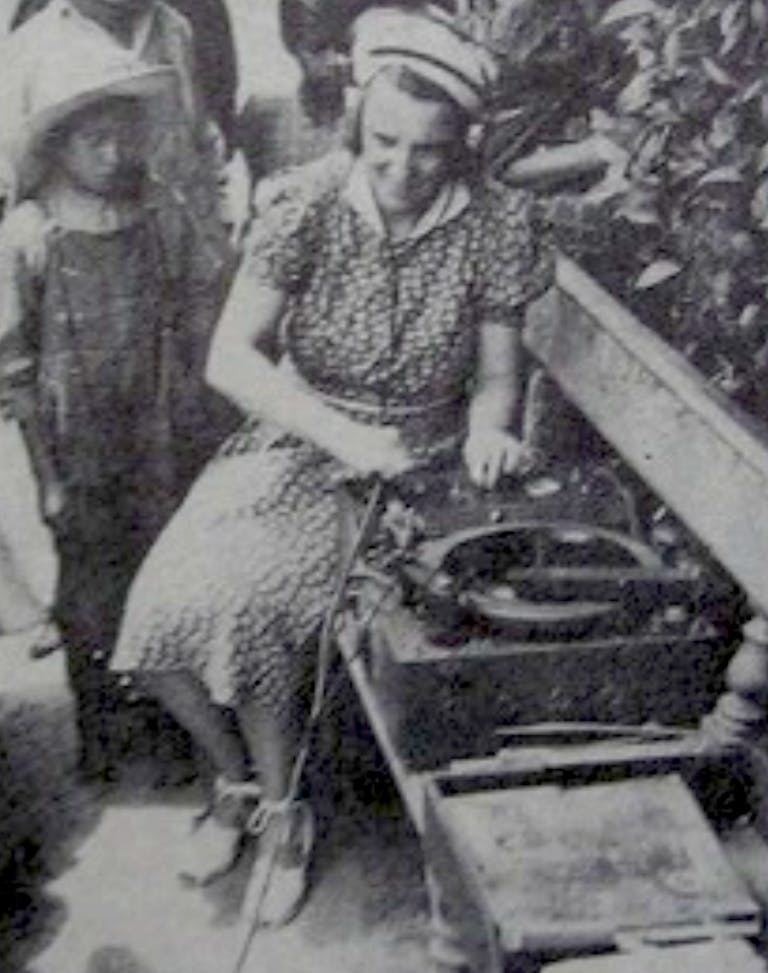
Laura Boultoun field Recording Photo via HaileeAnderson
1929: Laura Boulton is known for many field recordings, films and photographs of traditional music and performances of practitioners from Egypt, Sudan, Uganda, Kenya and Tanganyika. She was also an ornithologist (someone who studies bird calls) and her love of adventure and ornithology led her on expeditions around the world where she would record various traditional types of folk music and bird calls with a cylinder recorder. On these expeditions she was researching instruments, bird calls and traditional folk music of the cultures she was studying. For her work with the National Film Board of Canada (NFB) during the Second World War, she is recognized as being a pioneer for women who work in the film industry. Over 30,000 recordings (50 years of work) can be found at Columbia, Harvard University and the Library of Congress.
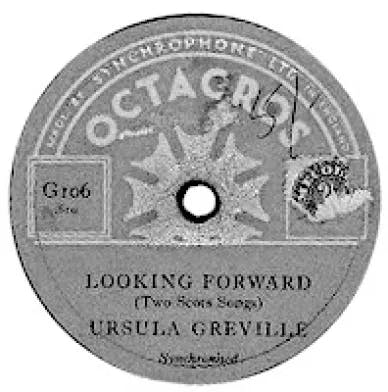
Octacros Label Photo via Vitaphone.blogspot.com
1934: Ursula Greville was a British soprano and folk singer, songwriter, and writer and editor of The Sackbut (a music magazine). She has been credited as the first female recording engineer. In 1934 she became part owner of the company Synchrophone, formed to make use of a vacant record factory in Hertford, England. The factory’s previous tenant was Metropole Record (who made Piccadilly and Melba records). That same year they started issuing under the label Octacros. Octacros recordings were single-sided 12″ records that were played along with short 16mm films. Cinemas would buy the records under a 12-month contract. The records were not sold to the public and are now considered rare. Ursula engineered records for the company until it was bought by Decca in 1937.

Helen Oakley Dance Photo via Soundgirls.org
1936: Helen Oakley Dance was a Canadian-American jazz journalist, record producer, and music historian. In the mid 1930s she produced much of Duke Ellington‘s small band records in Chicago. In 1937 she started working for Irving Mills (Master and Variety labels) in New York. Variety, along with Helen, produced over 170 records during the label’s brief existence. Following the death of her brother during the Second World War, she joined the Women’s Army Corps and later did secret operations with the Office of Strategic Services.
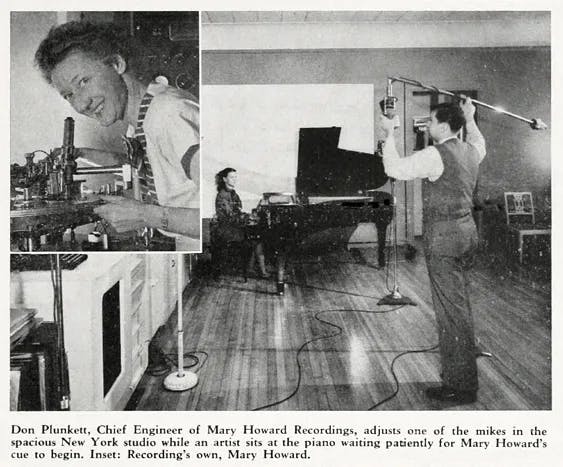
Mary Shipman Howard Photo via 78records.wordpress.com
1940: Mary Shipman Howard was one of the earliest female recording engineers and recording studio owners. Howard was a classically trained violist who started experimenting with sound recording in the late 1930s. In 1940 she started working for NBC in Manhattan and was promoted to engineer during the war. In 1947, Howard started Mary Howard Recordings studio and MHR label releasing her own commercial recordings. Artists included The Herman Chittison Trio, Ethel Waters, Lucille Turner and Dale Belmont. Some of the studio’s recording equipment included Van Eps lathe, Allied Cutting lathe, Presto 1-D Heads, and Langevin 101-A Amplifiers. She closed the studio in 1955 when she grew tired of being in the city, but enjoyed having had, at the time, one of the longest careers of any female music engineer.
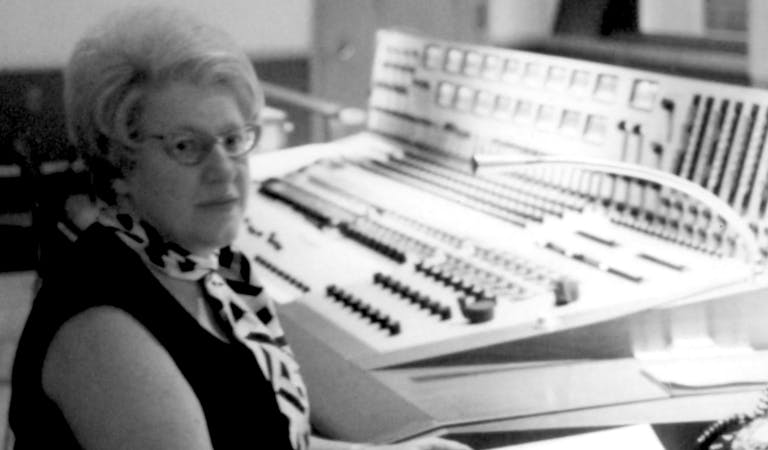
Ethel Gabriel Photo and more via https://www.livingsoundfilm.com/
1940: Ethel Gabriel was an American record producer and record executive with a four-decade career at RCA Victor. She produced over 2,500 albums including 15 RIAA Certified Gold Records and hits by Elvis Presley, Perry Como, Al Hirt, Henry Mancini, and Roger Whittaker among others. From a record tester, where she had to listen to one out of every 500 records for quality, she went on to become the first female record producer for a major label. At RCA Victor, she was on the ground floor of the creation of the company’s famous Nashville studios. She was a leader in the experiments and methods of electronically improving and influencing the sound of music, experimenting with the use of an echo chamber, and was involved with RCA’s earliest disco record releases. Gabriel retired from RCA Records in 1984, after 44 years with the label.

Evelyn Blanchard and Rose Palladino at work Photo via Sound Shaper – PressReader
1942: Evelyn Blanchard and Rose Palladino were radio engineers that worked for Radio Recorders in Hollywood, CA during WWII. They specialized in what Rose’s brother and fellow engineer, John Palladino called “armed forces deletion work” which was dubbing acetates of radio shows but removing the commercials. The acetates would be sent overseas to be played for the troops. Evelyn later married John in 1951.
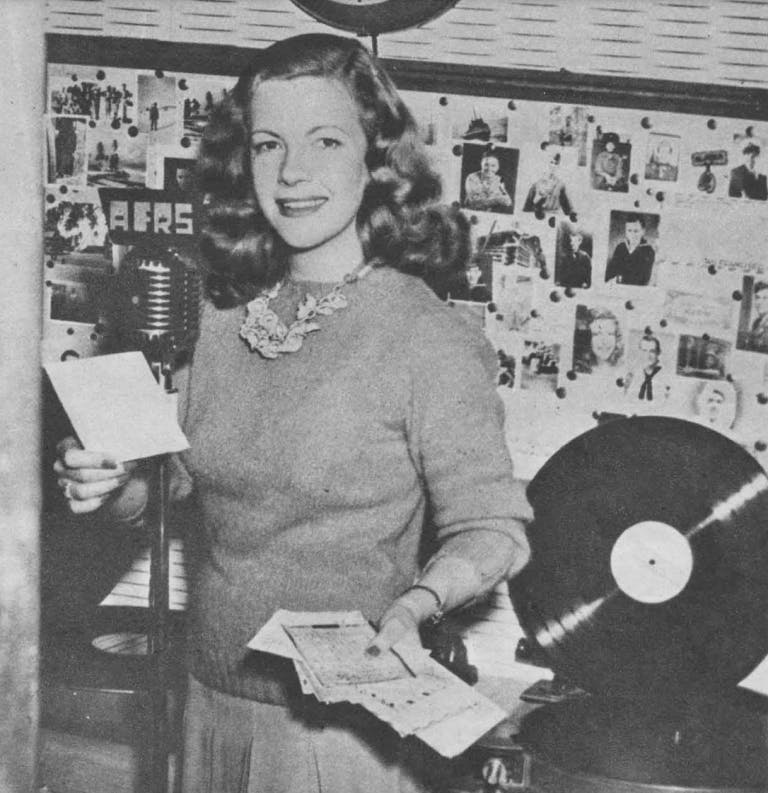
G.I. Jill (Martha Wilkerson) Photo via www.otrr.org
1943: G.I. Jill (Martha Wilkerson) was an American disc jockey and host of GI Jive, a music program on the Armed Forces Radio Service during World War II. This was the time that the first female radio DJs emerged. G.I. Jill’s positive personality and music selections were considered morale boosting to U.S. troops, in particular contrasted with the anti-American propaganda broadcasts of “Axis Sally” and “Tokyo Rose”. By the end of January 1945 she had made 870 broadcasts. She never gave her real name on the air, nor did listeners know that she was married and had a young family. Jill’s rapport with listeners went beyond her broadcast. Servicemen wrote letters asking her to play certain records and she tried to respond to all the letters she received – 500 letters per week in which she included a photograph of herself with her letter. Interaction went both ways as some listeners sent Jill pictures of themselves, leading her to comment, “I think I was the only person in the world who had pinup boys.”
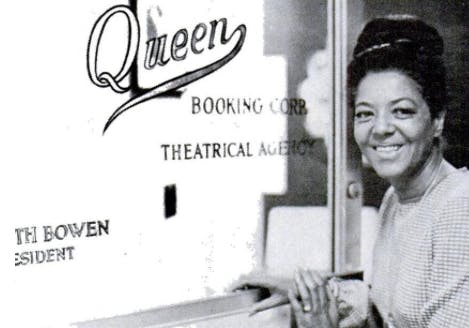
Photo via Musical Artist Institute
1944: Ruth Jean Bowen was a trailblazer in the entertainment industry, becoming the first black female talent agent and president of Queen Booking Corporation (QBC), the largest Black-owned talent agency in the world. She began her career managing her husband, Billy Bowen of The Ink Spots, before meeting singer Dinah Washington, which led to Bowen becoming Washington's personal publicist and manager. In 1959, Bowen founded Queen Artists, which later became Queen Booking Corporation after Washington's death in 1964. Bowen's agency represented top African-American talent, including Aretha Franklin, Ray Charles, Sammy Davis Jr., and many others, handling a wide range of performers from singers to comedians.

Marie Kilick and her patent. Photos via MarieLouiseKillick.org
1945: Marie Killick was an English audio engineer who patented the truncated-tip sapphire stylus in 1945 for playing gramophone records. The trade name of her invention was Sapphox. During World War II, she worked for the army making sound equipment, specifically metal cutters for making recordings on the battlefield, as well as designing a portable recorder for them to use. Decca offered her £750,000 for her rights to the patent but she refused. She had invented a machine which produced 10,000 units a week. In 1945, she filed a patent for her Sapphire Lapping Machine and later raised £300 to start a business manufacturing sound recording equipment in Putney, London. In 1945 Marie filed a patent application for her stylus. She was granted the patent in 1948. In 1953 Pye Ltd. infringed upon her patent. Her lawsuit spent 10 years in court and while Killick won the case, she was never able to recoup financially from it.
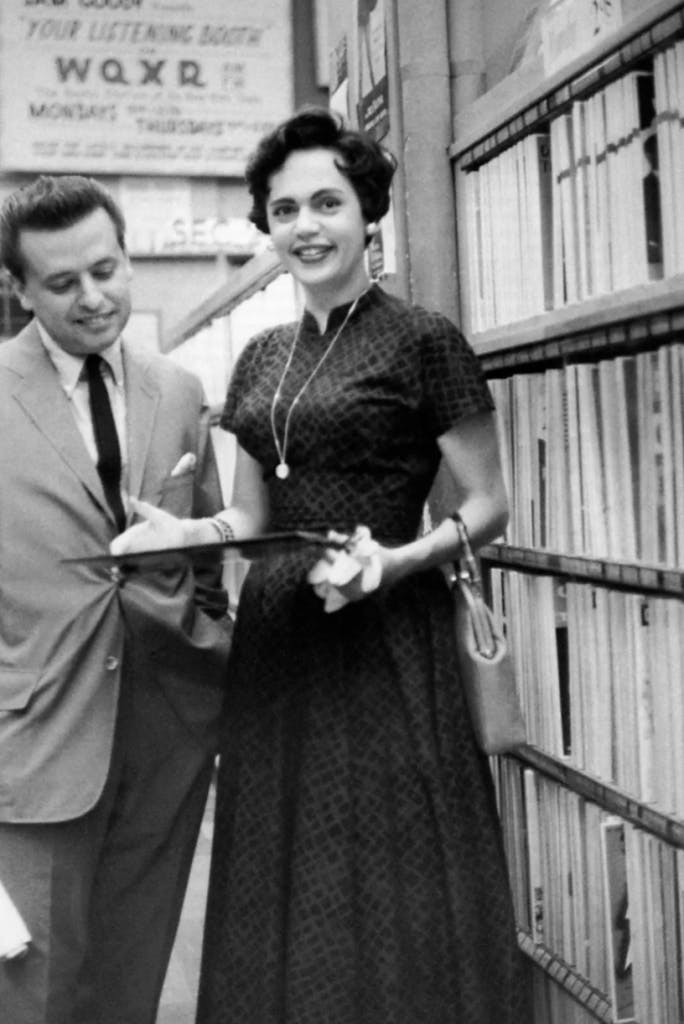
Miriam Bienstock with Nesuhi Ertegun in an undated photo. Photo via NYTimes
1947: Miriam Bienstock was an American record company executive who co-founded Atlantic Records in 1947 with Ahmet Ertegun and her then-husband, Herb Abramson, and ran it for many years. She was influential in the early days of Atlantic Records, becoming the company’s vice president in 1958. Miriam took charge of the company’s finances and production, handling payments to musicians and negotiating distribution deals. As the company flourished with such artists as Ruth Brown, Ray Charles, the Coasters, and the Drifters, she expanded her role as the company’s business manager, and negotiated a distribution deal with Decca Records in 1955. A profile of her in Billboard that year was titled “Atlantic’s ‘Money Man’ Is a Woman,” and described her as “one of the few women executives in the record industry, a business heretofore noted for its lack of fem talent.” Ahmet Ertegun said of her: “Miriam was an important person in keeping discipline at Atlantic Records, and keeping everything on the up-and-up… She is unheralded, unrecognized, but if we hadn’t had her in those developing years, the company would have folded. She also had very good taste in music.” She left Atlantic in the early 1960s, selling her stake in the company.
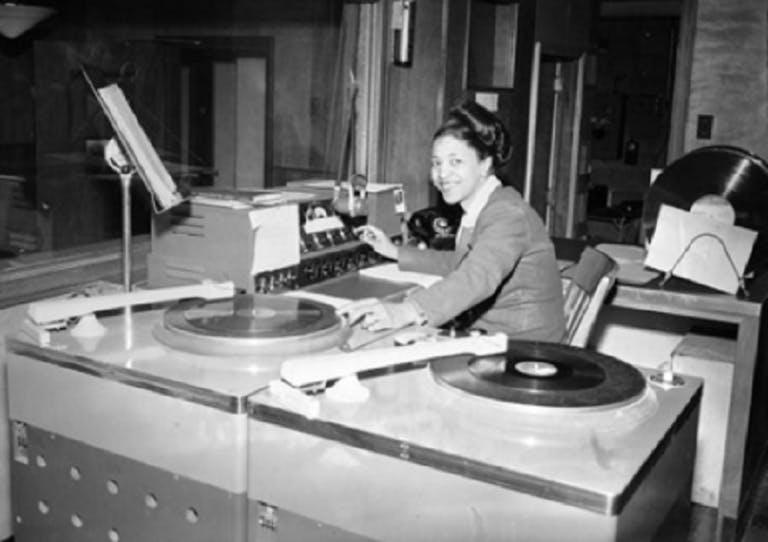
Mary Dee Dudley in the air chair at a special Hill District studio for what was then known as WHOD. Photo via Pittsburgh Music Story
1948: Mary Dee (Mary Dudley) is widely considered the first African-American female disc jockey and radio pioneer, breaking racial and gender barriers. On August 1, 1948, she went on the air at WHOD radio. Gaining national attention, Dee broadcast from a storefront, “Studio Dee”, in the Hill District of Pittsburgh from 1951 to 1956. She moved her show, “Movin’ Around with Mary Dee”, to Baltimore and broadcast from station WSID from 1956 to 1958. In 1958, she moved to Philadelphia and hosted “Songs of Faith on WHAT”, a gospel show, until her death in 1964. She combined coverage of community affairs, news and music by the latest African American artists, introducing local talent, and interviewing national celebrities. Her shows started at 15 minutes but after just six months it was expanded to an hour, two years later to two hours, and around 1954 her show was expanded again to four hours, which at the time was “Studio Dee”. Despite the reception range of the time, at 250 watts during the day, Dee garnered a large following, receiving over 150 fan letters per day. Her fans crossed color lines, particularly with her gospel music segment, and she had both black and white sponsors which was rare for the time. Mary Dee lent her time to numerous charitable causes raising money for schools and mentoring young musicians like George Benson to help them start their music careers. Every month she gave away records to community centers, youth homes, and veteran centers, often totaling 200 LPs per month. Dee was one of the first two black women admitted to the Association of American Women in Radio and Television, the other being Alma John. Campaigning together, they succeeded in obtaining a pledge from the organization to refrain from holding meetings in segregated facilities.
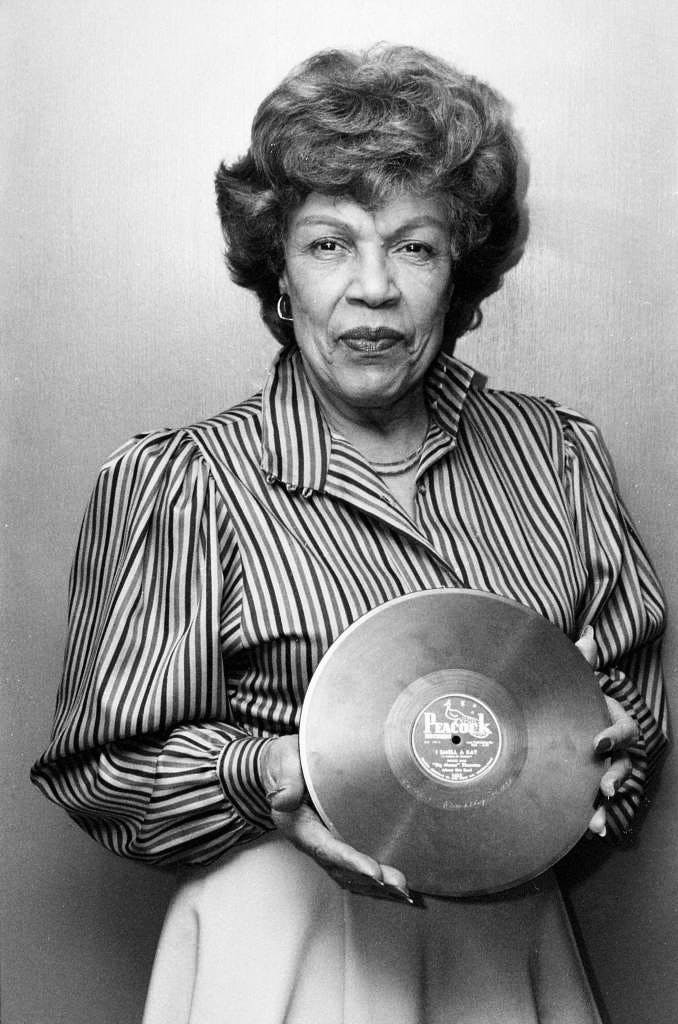
Image via TSHAonline
1940s: Evelyn Johnson was a key figure in the success of Don Robey's music empire, serving as the business manager and president of his labels, including Peacock Records and its subsidiaries. Starting in the late 1940s, she helped develop and manage a wide roster of influential blues, R&B, and gospel artists, including Clarence "Gatemouth" Brown, Johnny Ace, Bobby Bland, and B.B. King. Johnson also founded the Buffalo Booking Agency, which competed with white-owned agencies, and played a crucial role in the growth of Duke-Peacock Records, helping to shape one of the most successful African-American-owned music enterprises of the mid-20th century. She remained in charge of Robey's operations, overseeing the label’s expansion to include Back Beat, Song Bird, and Sure-Shot labels, and stayed at his office until 1973, when Robey sold his music assets to ABC/Dunhill and retired.
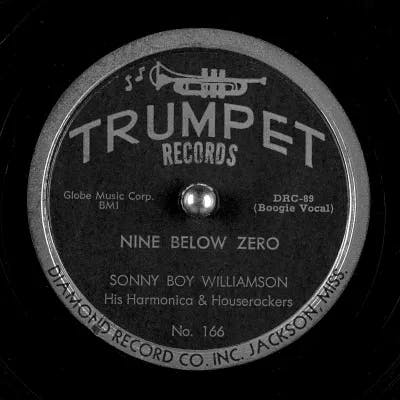
Trumpet Records label Photo via Delta Blues Museum
1950: Lillian McMurry born in Purvis Mississippi created the Diamond Record Company and served as producer for its Trumpet label, releasing blues records. She strongly influenced the development of modern blues with the label which ran until 1955. Just as Trumpet was achieving success, the label began losing artists to larger companies that could offer more money. She then created the short-lived Globe Records, which had its final recording in 1956. Many Trumpet songs have been reissued by Arhoolie, Acoustic Archives, Alligator, and other record labels. In 1995 Lillian McMurry donated the business files for the Diamond Record Company to the Blues Archive at the University of Mississippi. For her work with Trumpet, McMurry was inducted into the Blues Hall of Fame in 1998.
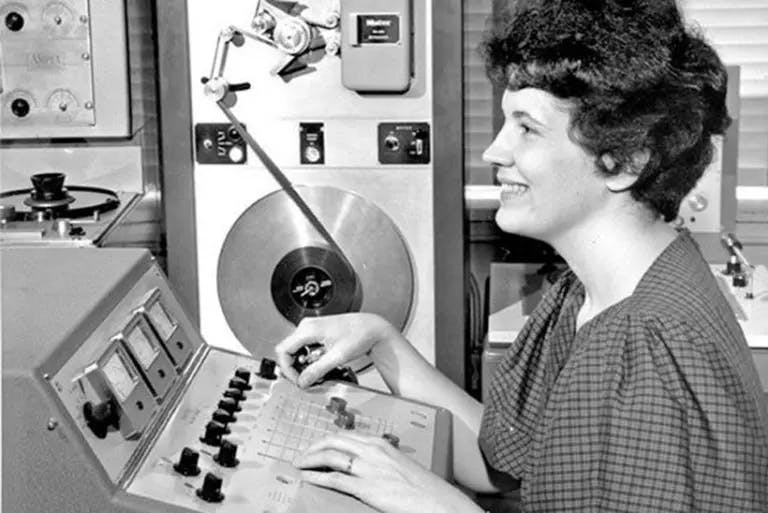
Wilma Cozart Fine Photo via Grammy.com
1951: Wilma Cozart Fine was an American record producer who ran the classical division of Mercury Records in the 1950s and early 1960s. In 1956 she was named vice president of the Mercury record label. She produced hundreds of recordings, particularly the Mercury Living Presence series. In 2011 she was awarded a posthumous Grammy Trustees Award for her significant contributions to the recording industry. She produced hundreds of records that are still recognized for their sound quality. Her husband, C. Robert Fine was also a record producer.
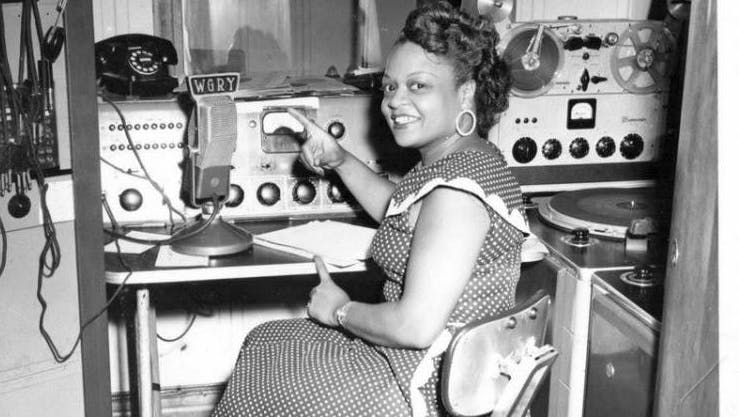
Image via NPR WFYI
1953: Vivian Carter was an American music industry pioneer. Known for co-founding the influential Vee-Jay Records in 1953, alongside her husband, James Bracken. Vee-Jay became a major independent label, signing artists like The Spaniels, Jimmy Reed, and The Four Seasons, and even securing the American distribution rights to The Beatles in 1963. Carter's work as a radio personality, especially her time hosting the "Livin' with Vivian" show, played a key role in promoting her label's artists and helping to shape the label's success. In addition to her radio work, Carter and Bracken also opened Vivian's Record Shop in 1950. Despite the label's eventual bankruptcy in the mid-1960s due to financial struggles, Carter’s role in shaping the independent label scene remains a defining part of her legacy.
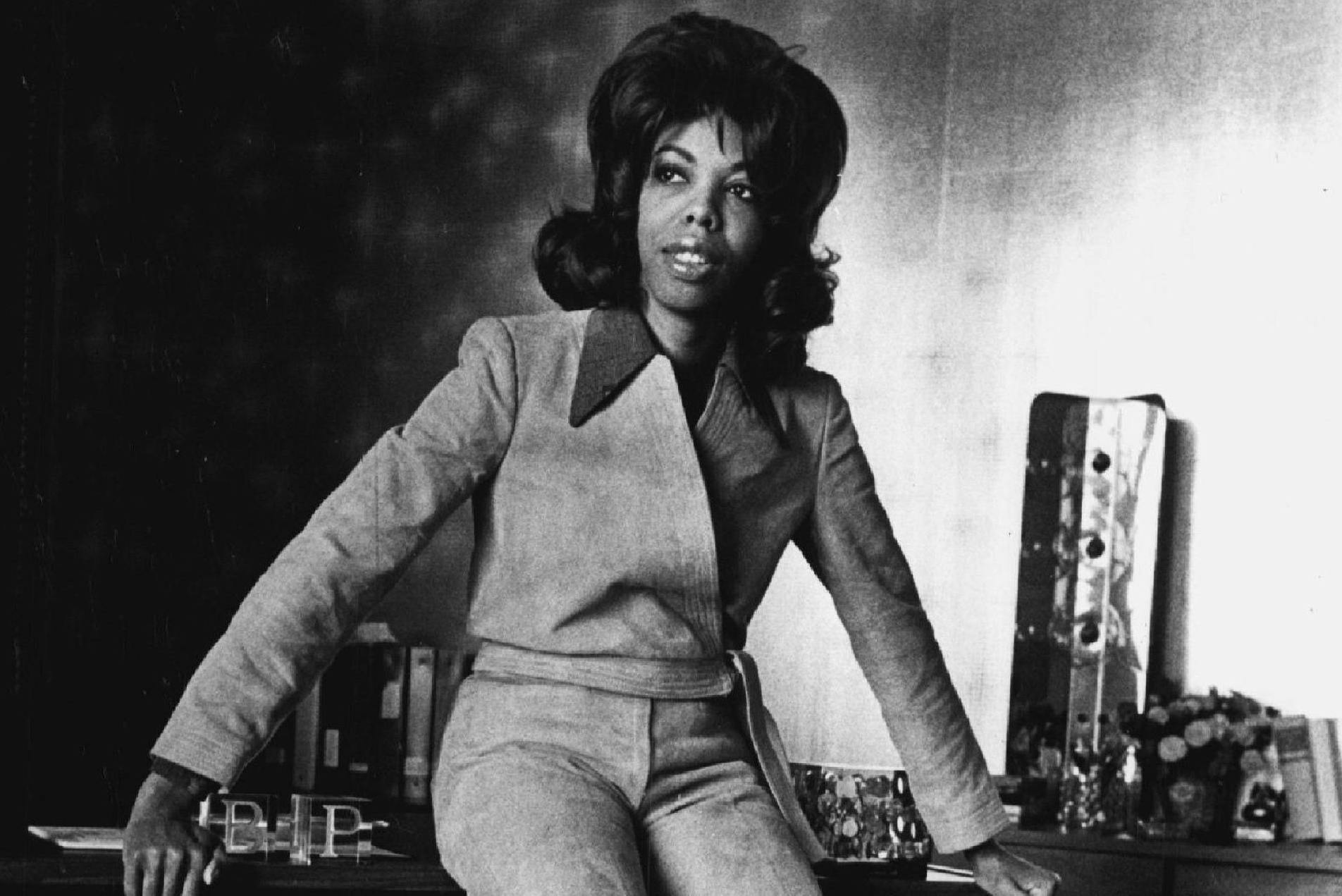
Image via Wikipedia
1955: Barbara Gardner Proctor was a pioneering African American advertising executive and music industry professional. Before founding Proctor and Gardner Advertising in 1970, she made significant contributions to VeeJay Records, where she worked in various roles, including as director of the International Division. Gardner played a key part in bringing The Beatles to the U.S. in 1962, helping secure their first American releases through a deal with EMI. She was the first African American woman to own an advertising agency, and in 1976, she was named Advertising Person of the Year, further cementing her legacy in both advertising and music.
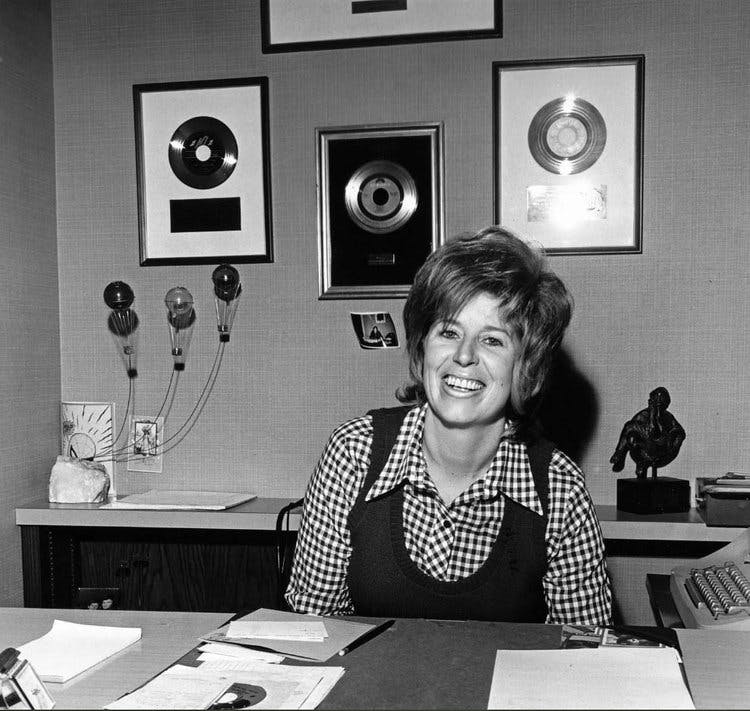
Image via Radio Hall of Fame
1963: Rosalie Trombley was a pioneering Canadian music director at Windsor’s CKLW radio station, known as "The Big 8." As one of the few female music directors in AM Top 40 radio, she had a remarkable ability to predict hit songs, helping launch the careers of major artists like Alice Cooper, Aerosmith, Bob Seger, and Elton John. Trombley’s influence extended far beyond the station’s reach, which covered much of the Detroit–Windsor area, and she is credited with breaking many records that went on to become hits across North America. Her contributions to music were honored with awards like the Rosalie Trombley Award and her induction into the Motor City Rock and Roll Hall of Fame. A statue in her honor was unveiled in Windsor in 2023. Trombley’s legacy in the world of music and vinyl lives on through her groundbreaking work in shaping the radio industry and breaking new talent.
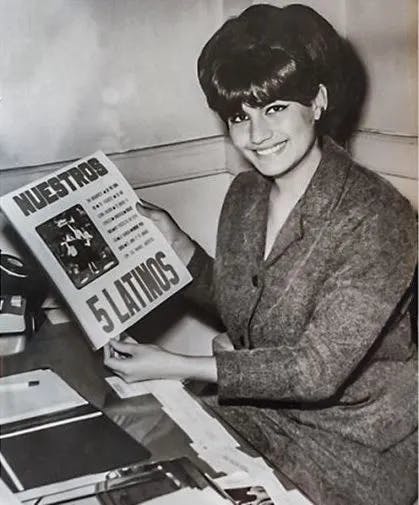
Image via El Peruano
1964: Rebeca Llave was one of the first music managers in her country of Peru. Between 1964-1969 her love for her music led her to running the record label Disperú, which focused on artists of various styles, expanding their horizons and opening doors of the industry they may not have otherwise had. Her charisma made her familiar with several local artists, and eventually her boss suggested she start her own label. From selecting artists, recording and manufacturing their records, to promoting on the radio and even designing the covers of the albums she was involved in all parts of the process. Her volume of work, and income would grow, to the point that her boss, the owner of Dispesa, began asking her for loans that unfortunately remained unpaid. Fed up of the situation and ready for a change of scenery, Rebeca traveled to the United States. Upon her return, tired of the math and gathering of master tapes, she decided to leave everything behind. However, her country and selectors around the world still celebrate her, and the artists she helped put out into the world.
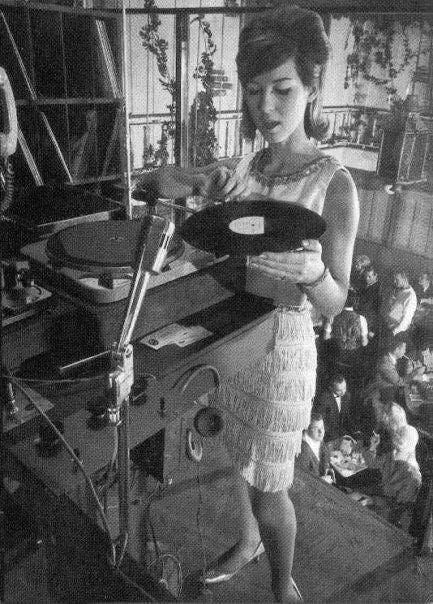
Image via Vintage Los Angeles
1964: Joanie Labine, the first female DJ and sound mixer at the Whisky A Go founded by Elmer Valentine, Phil Tanzini, Shelly Davis, and attorney Theodore Flier in 1964. Though, the club was billed as a discothèque, suggesting that it offered only live music, they opened with Johnny Rivers performing three sets and Joanie spinning records in between from a suspended platform at the right of the stage. The building had previously been a bank and had levels at the top where security used to watch over, and she played records in a suspended booth next to the stage and danced along to the music. Club goers thought it was part of the show so that’s how go-go dancing was popularized. It was a last minute decision to put Joanie up there on opening night in January of 1964, but because she was a movement was born.
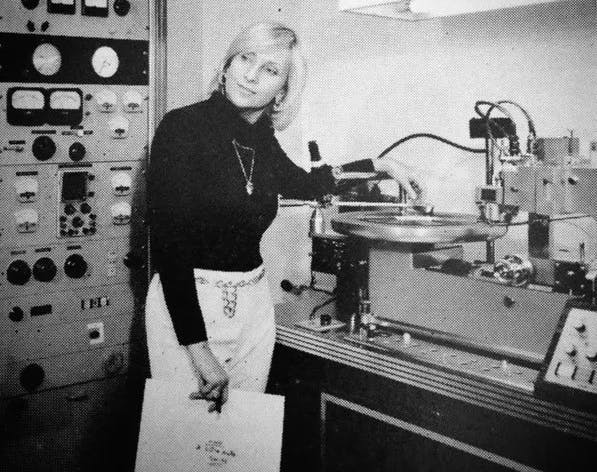
Gladys Hopkowitz with her lathe via Discogs.com
1970: Gladys Hopkowitz was a mastering engineer in the late 60s and early 70s. She was the owner and operator of Sound Technique, a mastering and lacquer cutting studio in New York City until she retired. Sound Technique closed in 1992. The following runout etches that can help identify lacquers they cut: SOUND TECHNIQUE NY, S.T., SoT, Soc, 5oC (S often looks like a 5). Gladys cut countless records including Sun Ra ‘Cosmos’, The Heptones ‘On The Run’ and more.
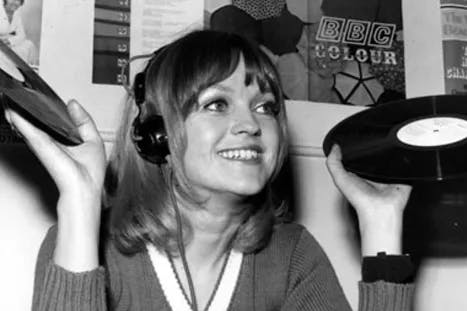
1970: Annie Nightengale was the first female presenter on BBC Radio 1, the station’s longest-serving DJ, and one of the UK’s most respected and influential broadcasters, famed for her enthusiasm for a wide spectrum of musical genres. A former journalist, and a trusted member of the Beatles’ inner circle, her break in radio came with the BBC. In 1967 the BBC Radio 1 launched and it became her ambition to join. But managers stuck to their all-male line-ups saying radio DJs were ‘husband substitutes’. She found that ridiculous. Eventually they relented, but it was hard going. “Nobody showed me the technical side. All the men had learned…It was terrifying. I had a lot to prove.” Some wanted her to fail, complaining in her headphones about the choice of music while she was on air. However, she found a soulmate in John Peel, also famed for his refusal to adhere to BBC playlists. Her knowledge and enthusiasm carried the day, but it would be 12 years before Radio 1 employed Janice Long as a 2nd female presenter. Nightingale also embraced punk bringing ever changing music styles to The Old Grey Whistle Test, which she began presenting in 1978. She paved the way for the many female DJs to follow in her footsteps.
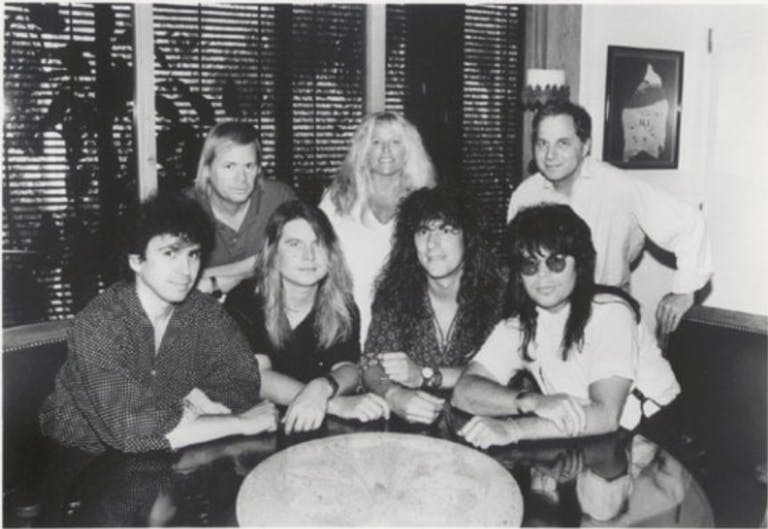
Roberta Petersen (Templeman) signing Radioactive Cats to Warner Bros with Ted Templeman, and Lenny Waronker. Photo via Ian Espinoza
1971: Roberta Petersen was an American influential A&R executive with an eye for the eclectic, helping launch the careers of artists like the Flaming Lips, Jane’s Addiction and Devo. She was the sister of record producer Ted Templeman and married to drummer John Petersen. In 1971 she joined Warner Brothers Records and by 1977 had risen to the general manager of A&R. In 1995 she joined Geffen Records as senior director of A&R where she released commercial hits like Beck’s `Odelay’ and Counting Crows ‘Recovering the Satellites’.
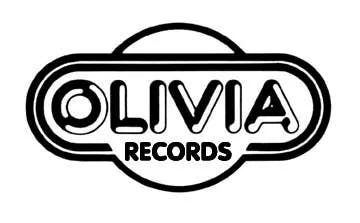
Olivia Records Logo Photo via Queer Music Heritage
1973: First called the “Olivia Collective,” Ginny Berson, Cris Williamson, Meg Christian, Judy Dlugacz, and six other women borrowed $4,000 and founded lesbian run Olivia Records; a women’s record label out of the Washington D.C. area that promoted music to validate and celebrate women’s and lesbian’s experiences. They named the label after the heroine Olviia in a novel by Dorothy Bussy, who fell in love with her headmistress at boarding school. Artists on the label often addressed personal and local problems to raise an acute awareness and share a radical political message within the label. With emerging feminist movements in the 1970s there was a countercultre focus on the discrimination of women within gay rights groups, shining a light on the heteronormativity of the 1960s. Labels like Olivia contributed to the lesbian sub-culture by providing a public platform to address topics that were lacking in dominant political venues, helping to develop strategies to cope, organize, and articulate their experiences. As a functioning label Olivia Records sold more than one million records and produced over 40 albums during its twenty years of operation. In 1974 the label moved to California which caused financial problems and their ultimate demise. Unable to reinvent with the changing musical landscape for women, from riot grrrl to Lilith Fair, Olivia could no longer sustain itself as a record label. In 1988 Olivia stopped putting out records and instead performed a series of 15th anniversary concerts however it wasn’t enough and they eventually restructured to become a broader women-centered social business with Olivia, a lesbian travel company. As an independent label, Olivia Records cultivated a fan base through music festivals, coffee houses and bookstores, and mail order catalogs; they favored apprenticeship.
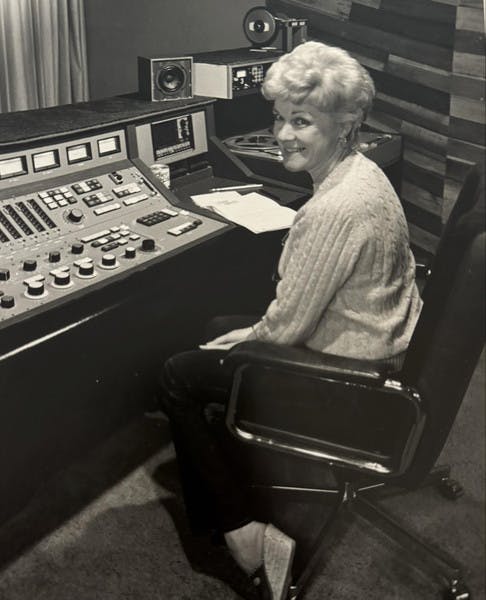
Carol Hibbs at console via Discogs.com
1975: Carol Hibbs was an audio mastering engineer and lacquer cutter at K Disc Mastering in Hollywood, California. K Disc Mastering, was a prominent disc mastering facility and successor to Keysor-Century Studios, the in-house mastering studio of Century Record Mfg. Co. The facility was renamed to K Disc in 1978 and relocated to Hollywood mid-1979. It operated as a subsidiary of Keysor Century Corp. (also known as Century Record Co.) until it ceased operations around 1995. The studio consisted of two cutting suites, one equipped with a Neumann SAL/SX 74 lathe and one with two Neumann VMS 80 lathes. K Disc was a full-service operation, and lacquers cut at this facility were often sent on to Century Record Mfg. Co. for further plating and record pressing. Direct-to-disc recordings cut at K Disc were released under the labels The Great American Gramophone Company and Century Records. Records cut by Carol feature are identified by the initials "ch" etched in the runout grooves of vinyl along side the "kdisc" stamp. She attended Compton High School and hails from Compton, California. Carol began her career as a technician at Century Record Mfg. Co., where she learned the engineering process, before joining K Disc. She currently resides in Garfield, Arkansas.

Gudrun Gut Photo via Robert Carrithers
1978: Gudrun Gut is a German electronic musician, DJ, presenter, music producer and founder of Monika Enterprise. She grew up in the Lüneburger Heide and moved to West Berlin in 1975, where she studied visual arts at the Hochschule der Künste from 1978 to 1984. Gudrun Gut’s story spans many years, scenes, and sounds, from the “ingenious dilettantes” subculture of early 1980’s Berlin to an expansive solo catalog of later work. Her talents extend beyond musician, however, to include founding record labels like Moabit Musik and Monika Enterprise, radio presenter and producer and more.
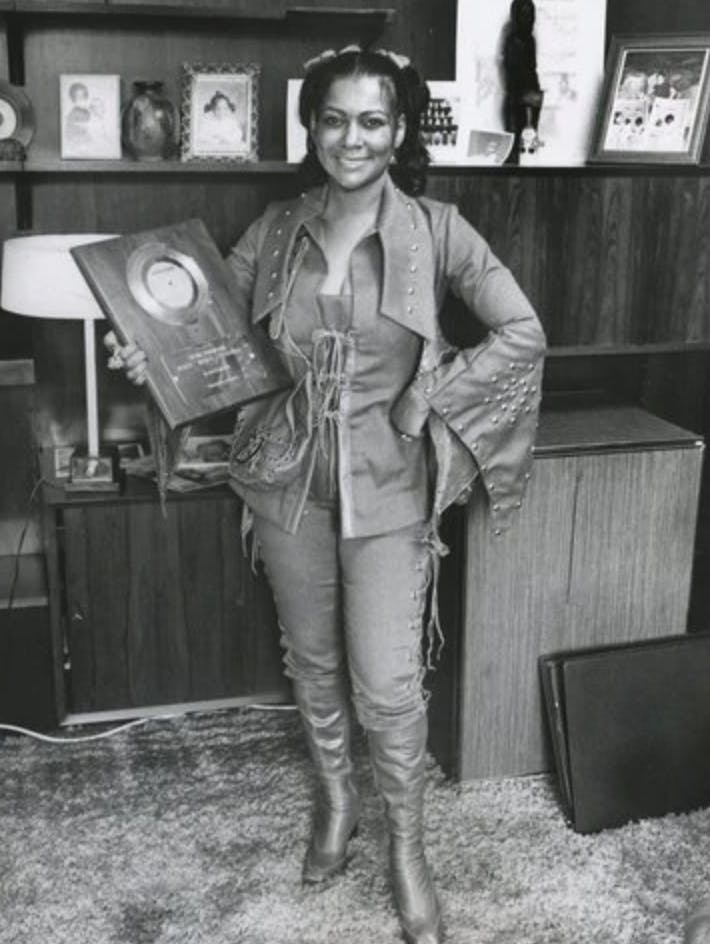
Sylvia Robinson Photo via Hip-hop Music Fandom
1979: Sylvia Robinson was an American singer, record producer, musician, and record label executive. She helped introduce hip-hop to the world by co-founding Sugar Hill Records, releasing SugarHill Gang’s “Rapper’s Delight” widely acknowledged as the first modern rap single. Robinson is credited as the driving force behind two landmark singles in the hip hop genre; “Rapper’s Delight” (1979) by the Sugarhill Gang, and “The Message” (1982) by Grandmaster Flash and the Furious Five; which caused her to be dubbed “The Mother of Hip–Hop”. Later acts she signed included the all-female rap/funk group The Sequence, who had a million-selling hit in early 1980 with “Funk U Up”. The company was named after the Sugar Hill area in Harlem, NYC, an affluent African-American neighborhood known as a hub for creatives in the early and mid-1900s. In 1985, due to changes in the music industry and the competition from other hip-hop labels such as Profile and Def Jam, contributed to financial issues and the label folded. Robinson received a Pioneer Award for her career in singing and being the founder of Sugarhill Records at the 11th Annual Rhythm and Blues Awards Gala in 2000.
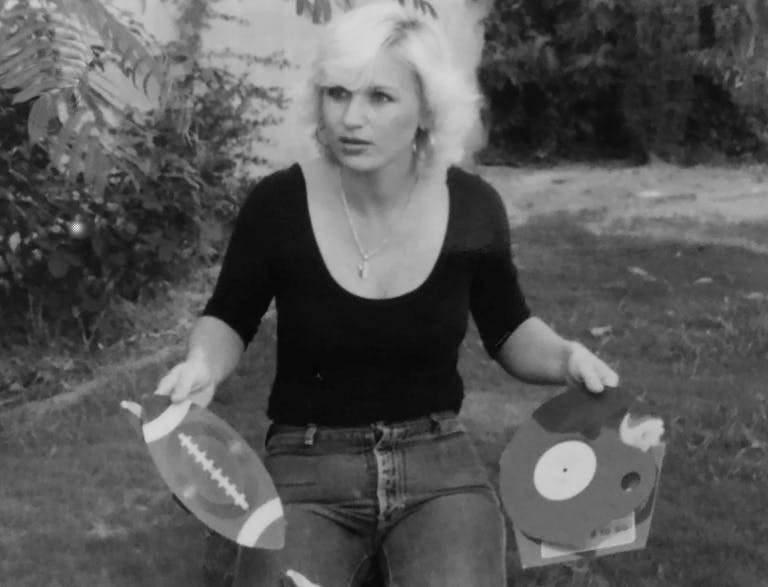
Liz Dunster at Erika Records in the 1980s Photo via Billboard
1980: Liz Dunster established the heavy metal-focused vinyl label Erika Records. In 1981 Liz founded Erika Records Inc. in Southern California, becoming the first-ever female owner of a vinyl record manufacturing plant. Erika Records is capable of pressing everything from standard 12” black records to any color combination you can imagine. Under her leadership, the business has grown from 2 record presses to 40 and is still expanding. The company is the largest manufacturer of custom records and picture discs in the US due to Liz’s innovative spirit and commitment to re-imagining music’s oldest medium. She has pushed Erika Records to be the first record manufacturer to only use 100% lead-free vinyl material and she has influenced the industry as a whole to become more ecologically mindful. Dunster has been keeping vinyl alive for 40 years and hopes to inspire a whole new generation to do the same.
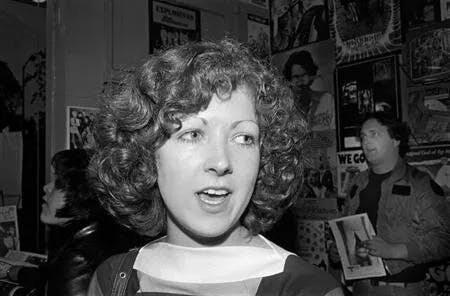
Lisa Fancher Photo Courtesy of Lisa Fancher
1980: Lisa Fancher established the independent record label Frontier Records in 1980 in Sun Valley, Los Angeles. She was a former employee of Bomp! Records and writer of the liner notes for the first album by The Runaways. Lisa first found success with the release of the Circle Jerks album Group Sex. The label went on to put out records by such bands as Suicidal Tendencies, Heatmiser, Christian Death, and more. She continues to release vinyl by the artists on her roster to this day.
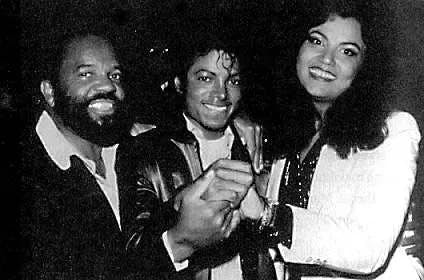
Berry Gordy, Michael Jackson, and Suzanne de Passe Photo via alchrista-blog.tumblr
1982: Suzanne de Passe is an American businesswoman, television, music and film producer. In 1967 she began working at Motown as Creative Assistant to founder Berry Gordy. Early on de Passe developed The Jackson 5‘s wardrobe when they were on the road and was integral to the development of them, Lionel Richie, Rick James and other acts during her decades at Motown. In 1982 de Passe started her new role as president of Motown Productions, she was instrumental in taking the record label to television with the Emmy-winning “Motown 25: Yesterday, Today, Forever,” where the Supremes reunited and Michael Jackson premiered his “Moonwalk”. When Motown was sold, she partnered with her mentor in Gordy de Passe Productions and subsequently established de Passe Entertainment in 1992 where she is co-chairwoman today.
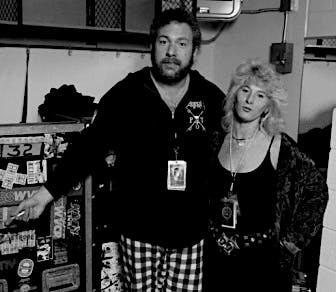
Marsha Zazula with husband Jon Photo via IndigoMusic.com
1982: Marsha Zazula along with her husband Jon launch the American independent record label Megaforce Records to release the first works of Metallica. The couple had humble beginnings in their music career, as they started out selling vinyl imports and picture discs at New Jersey flea markets. After starting Megaforce, the duo was instrumental to the development of thrash metal, having signed such acts as Metallica, Anthrax, Overkill and Testament. The label is distributed in the United States by RED Distribution, having previously been distributed by Atlantic Records while Anthrax‘s recordings from 1985 to 1991 were marketed by Island Records.
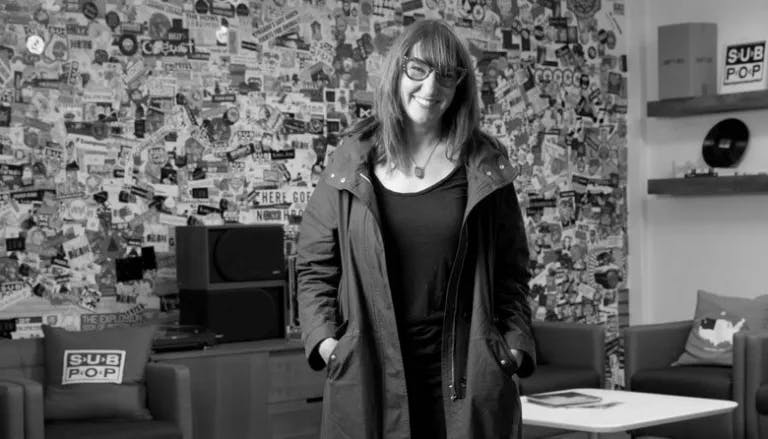
Megan Jasper Photo via Seattle Business Mag
1989: Megan Jasper began her internship at Seattle based label Sub Pop Records in 1989. Sitting on the floor of office, she listened to Erica Hunter, Sub Pop’s one-person marketing team, call college radio stations in the hopes of them playing more Mudhoney. From the spray painted lobby to the colorful chaos of energy in the office she knew she’d found her place. Megan did everything to start from assembling records, to receptionist, her first promotion because her desk was in the center of the lobby, to years later calling the shots. She learned early to hustle, and manage whatever else was needed, selling records to independent record stores in the US and managing Sub Pop’s payroll system. After being laid off in 1991 she spent a year touring and selling merch for Dinosaur Jr. and helping a friend set up his merch company. In 1992 she began working at Caroline Distribution as their North West Sales Rep. However, in 1998 she returned to Sub Pop as the label’s Senior Project Manager, soon promoted to General Manager, then to Executive VP, and now CEO. A well deserved journey, and leaving Sub Pop in the most capable hands.
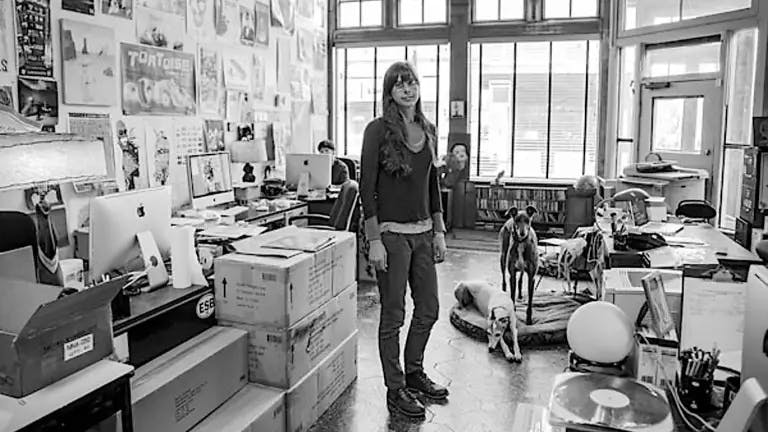
Bettina Richards Photo via TimeOut
1992: Former Atlantic A&R executive Bettina Richards founded Thrill Jockey Records, an American independent record label in 1992 with $35,000 of family and personal capital, while working at a Hoboken, New Jersey, record store, and ran the label from her apartment in New York City. In 1995 she moved the label to Chicago and has since gone on to release dozens of influential albums in the Indie rock, heavy metal, experimental rock, and electronic genres.
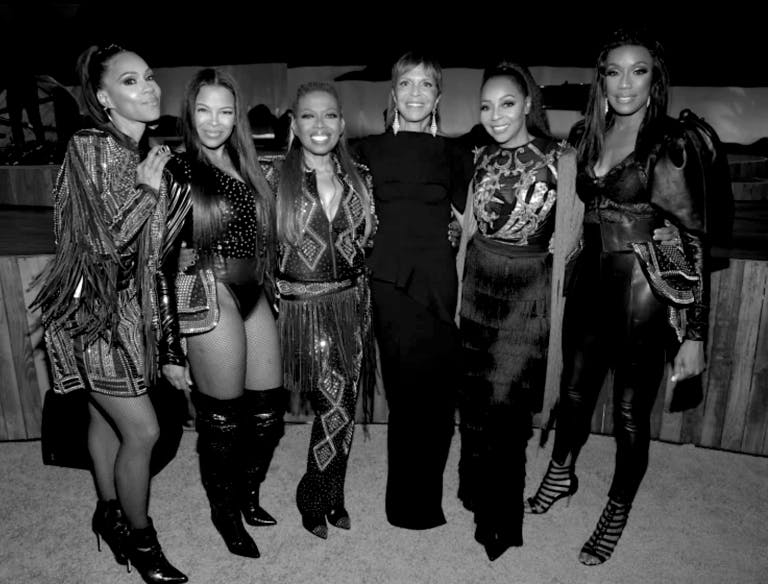
Sylvia Rhone, chairman and CEO of Epic Records, center, with En Vogue at City of Hope Spirit of Life Gala in Santa Monica Photo via LA Times, by Lester Cohen / Getty Images for City of Hope
1994: Sylvia Rhone is an American music industry executive. She is the chair and CEO of Epic Records, a label owned by Sony Music Entertainment. Rhone is regarded as the most influential female executive in the history of the music business. In 1994 she was appointed chairman and CEO of Elektra Entertainment Group, becoming the first woman, and first African-American in the industry, to hold the title at a major label. She was named chairman and CEO of Epic Records in 2019 a division of Sony Entertainment and has held senior positions at all three major record companies, being the first woman to be named CEO of a major record label owned by a Fortune 500 company. Rhone served previously in senior positions at Vested In Culture, Universal Motown, Elektra Entertainment Group and Atlantic Records.

Missi with her favorite vinyl sales rep. Terry McGibbon Photo Courtesy of Missi
1995: Missi Callazzo, former radio director, began an internship at Megaforce in 1989 and has been there ever since. When MRI was founded in 1995 as Megaforce’s sister company to help flourish the business, Missi was at its helm. The label went on to acquire the acclaimed blues / jazz label, Palmetto Records in 2009 and Missi continues to work there today.
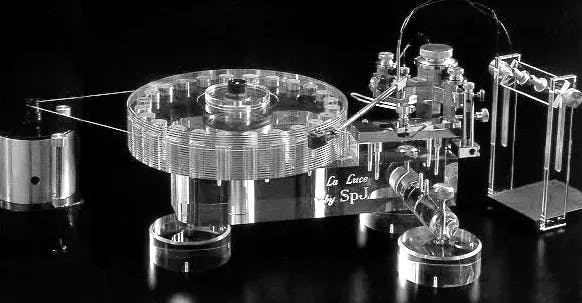
La Luca Turntable by Judith Spotheim Koreneef Photo via vinylphilosophy.blogspot.com
1998: Judith Spotheim Koreneef is of Israeli descent and lives in Eindhoven, Holland. Spotheim designed an audiophile masterpiece with her La Luca turntable which she describes as a precision measuring instrument and manufactured to extremely fine tolerances from materials chosen to ensure neutral and accurate playback. It has low energy-storage, direct-coupled, non suspended design driven by a stand alone motor and a belt of elastic thread. The turntable’s transparent, 2” thick platter is machined from a solid block of acrylic and has a row of stainless-steel cylinder weights embedded in its outer edge. The handmade bearing assembly is snugged inside an attractive black chrome, hardened steel spindle shaft. It has been difficult to find more information on Judith than this, but people continue to marvel at her turntable design which retails for $18,500.

If shared please credit appropriately, and let us know if we missed someone.
Sources:
https://apriltucker.com/timeline-women-1930/
Leslie Gaston-Bird’s book, “Women in Audio”
Various: wikipedia.com

